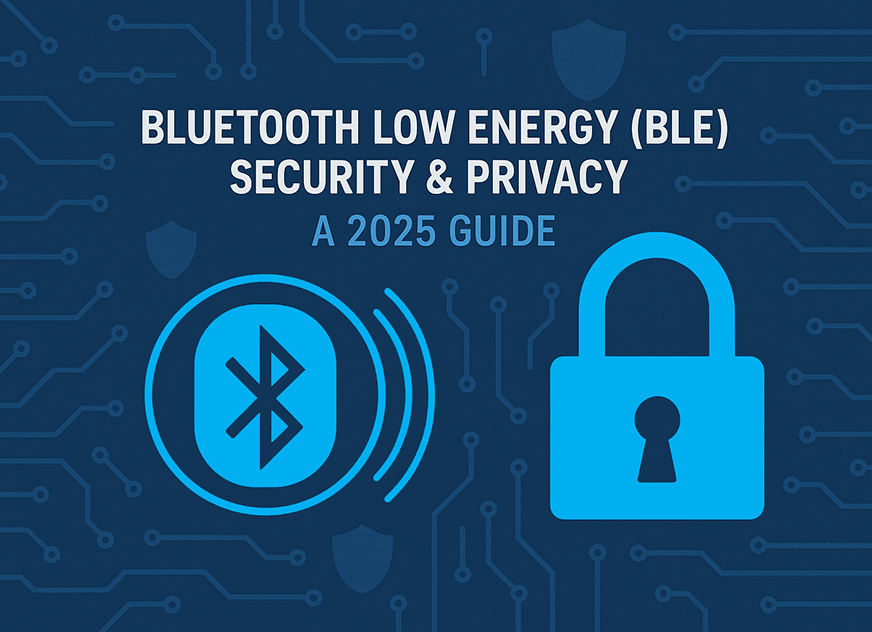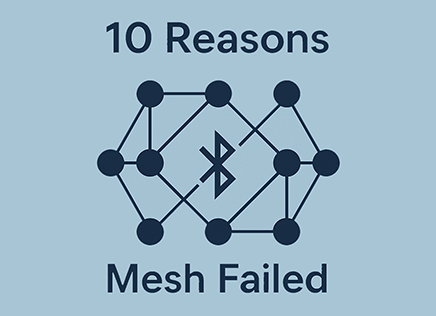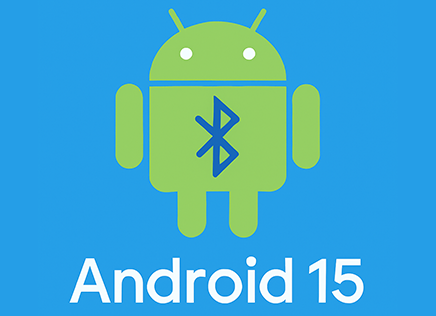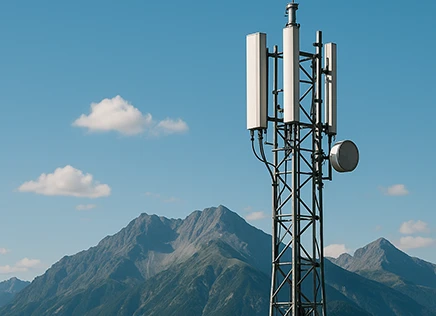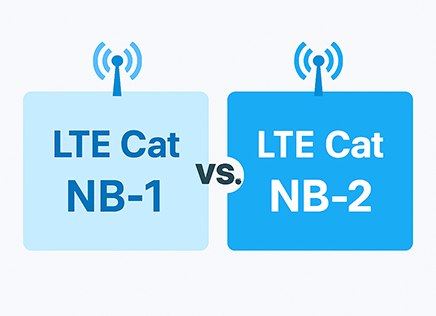
With the explosive growth of IoT applications, particularly in industrial monitoring, smart cities, and agriculture, mobile network operators and device manufacturers have turned to NB-IoT technologies for low-cost, long-range, low-power connectivity. LTE Cat NB-1, introduced in 3GPP Release 13, marked the beginning of this evolution. LTE Cat NB-2, introduced in Release 14, builds on NB-1’s foundation with key enhancements. Here’s how these two NB-IoT categories compare.
Introduction and Standardization
| Feature | LTE Cat NB-1 | LTE Cat NB-2 |
|---|---|---|
| 3GPP Release | Release 13 | Release 14 |
| Initial Launch | 2016 | 2017 |
B-1 was the first formalized NB-IoT standard, designed for minimal complexity and ultra-low power. NB-2 was developed shortly after, with upgrades aimed at extending the capabilities of NB-1 without sacrificing its power efficiency or wide coverage.
Data Rate Throughput and other Comparisons
| Metric | LTE Cat NB-1 | LTE Cat NB-2 |
|---|---|---|
| Uplink Peak Rate | ~66 kbps | ~158.5 kbps |
| Downlink Peak Rate | ~26 kbps | ~127 kbps |
| Duplex Mode | Half-duplex | Half-duplex |
| Channel Bandwidth | 180kHz | 180kHz |
| Maximum Output Power | 20 and 23 dBm | 14, 20, and 23 dBm |
| Data Encryption | EPS-AKA | EPS-AKA |
| Positioning | Cell ID | OTDOA, E-CID |

NB-2 significantly boosts both uplink and downlink rates. This is crucial for applications involving larger payloads or faster data transfer, such as firmware-over-the-air (FOTA) updates or image-based sensors.
There’s a bit change in the positioning. NB-1 uses Cell ID positioning (CID), which works by determining the location of the base station (cell tower) to which the NB-IoT device is connected. Since the device is communicating with this tower, its location is assumed to be somewhere within the coverage area of that tower. This gives a relative location that isn’t very precise, which is why NB-1 devices often integrate GPS as well.
On the other hand, NB-2 uses both Enhanced Cell ID (E-CID) and OTDOA. E-CID is an enhancement over basic Cell ID-based positioning, combining cell identity with additional radio measurements to improve accuracy. This improves the accuracy compared to the standard Cell ID of NB-1 to about 100-500 meters.
On the other hand, OTDOA is a network-based positioning technique that improves the positioning accuracy even further by calculating the position of a device. OTDOA measures the time differences between signals received from multiple nearby base stations, allowing accuracy in the range of 50-200 meters.
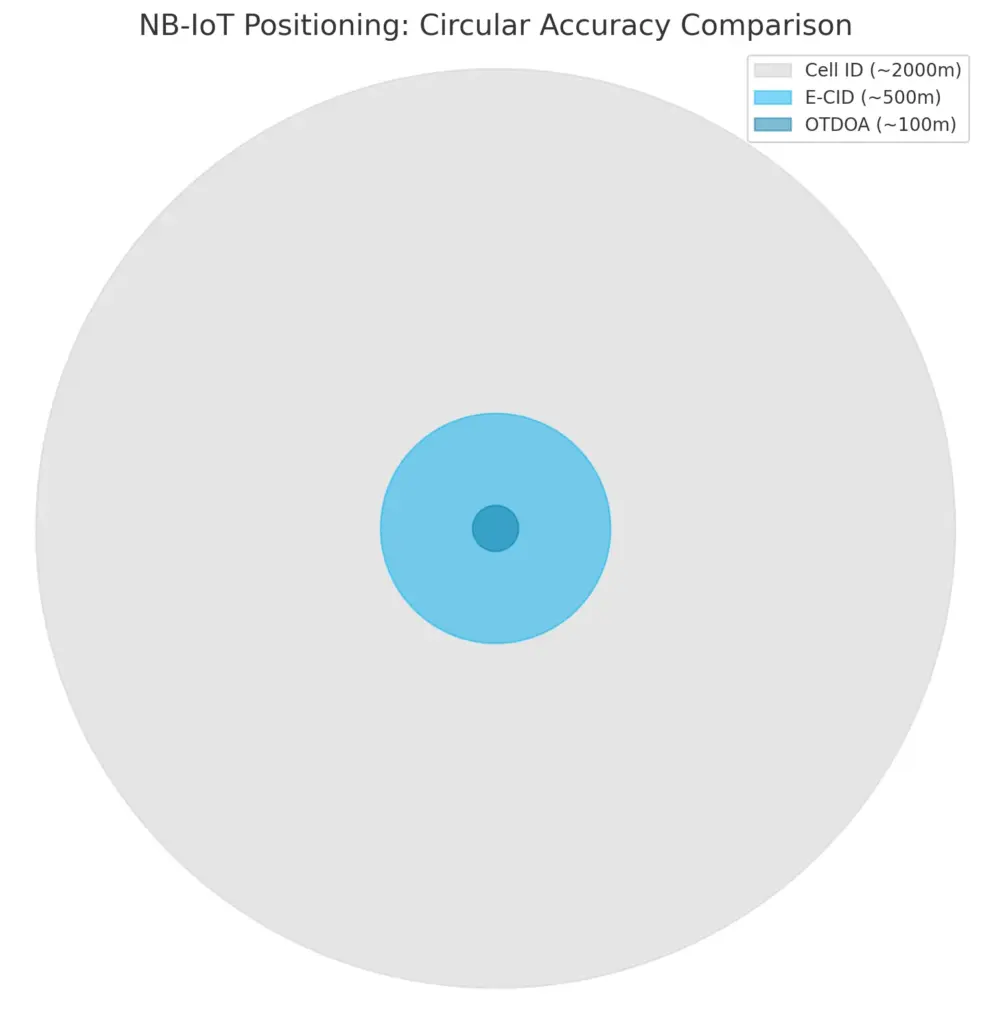
The advantage of relying on Cell ID, E-CID and OTDA is that they can get good accuracy even indoors or in urban canyons where, GPS is not available or fails. They’re also much more power efficient for devices that cannot support power-hungry GNSS modules. One can supplement GPS by helping speed up acquisition, we expect some modules could use initial location data to speed up the search and reduce the Time-To-First-Fix (TTFF).
Latency and Efficiency
NB-2 introduces reduced latency thanks to:
- Multi-tone transmissions in both uplink and downlink (NB-1 only supported uplink multi-tone).
- Enhanced early data transmission (EDT) for quicker response times.
- Higher scheduling flexibility, improving responsiveness.
These features make NB-2 better suited for use cases that need more frequent communication or faster turnaround, such as security sensors or logistics tracking.
Device Complexity and Power Consumption
| Feature | LTE Cat NB-1 | LTE Cat NB-2 |
|---|---|---|
| Power Efficiency | Ultra-low | Maintained |
| PSM/eDRX Support | Yes | Yes, with enhancements |
While NB-2 adds new capabilities, it retains the same ultra-low power focus of NB-1, thanks to Power Saving Mode (PSM) and Extended Discontinuous Reception (eDRX). NB-2 also optimizes these features, especially during mobility scenarios and long sleep cycles.
Feature Enhancements in NB-2
NB-2 adds several new features that extend the versatility of NB-IoT:
- Positioning Enhancements: Support for OTDOA (Observed Time Difference of Arrival), enabling basic device geolocation.
- Multicast: Efficient firmware updates to many devices at once.
- Cellular Broadcast: Allows broadcasting messages to multiple NB-IoT devices.
- Mobility Enhancements: Improved handover capabilities and idle mode mobility support.
These additions broaden NB-IoT’s utility in scenarios like smart transportation or environmental monitoring where mobility and group messaging are valuable.
NB-IoT Application Comparison
| Application Type | NB-1 | NB-2 |
|---|---|---|
| Static sensors (e.g. water meters) | ✅ | ✅ |
| Smart lighting, alarms | ✅ | ✅ |
| Real-time asset tracking | 🚫 | ✅ |
| Video/image transmission | 🚫 | ✅ (Limited) |
| Group firmware updates | 🚫 | ✅ |
| Basic geolocation | 🚫 | ✅ |
You can see from the comparison that NB-1 is ideal for stationary, low-data use cases. NB-2 opens the door to more dynamic and data-heavy applications, extending NB-IoT’s potential in modern smart ecosystems.
Both NB-1 and NB-2 use existing LTE infrastructure and can coexist in-band, guard-band, or standalone.
NB-2 devices are backward compatible with NB-1 networks, but the reverse isn’t true.
Operator support for NB-2 is still emerging globally, as NB-1 remains more widely deployed as of 2025.
Conclusion: Choosing Between NB-1 and NB-2
- Choose LTE Cat NB-1 if your application prioritizes ultra-low power, long battery life, and low complexity—such as smart meters, agriculture sensors, or waste management.
- Choose LTE Cat NB-2 if you need higher throughput, multicast capabilities, or better positioning—it’s a lot more useful for asset tracking, over-the-air updates, and mobile IoT devices.
NB-2 is not a replacement but an evolution of NB-1, enabling more robust and diverse IoT solutions while maintaining backward compatibility and power efficiency. As network support matures, we can expect broader adoption of NB-2 for more demanding IoT applications.





